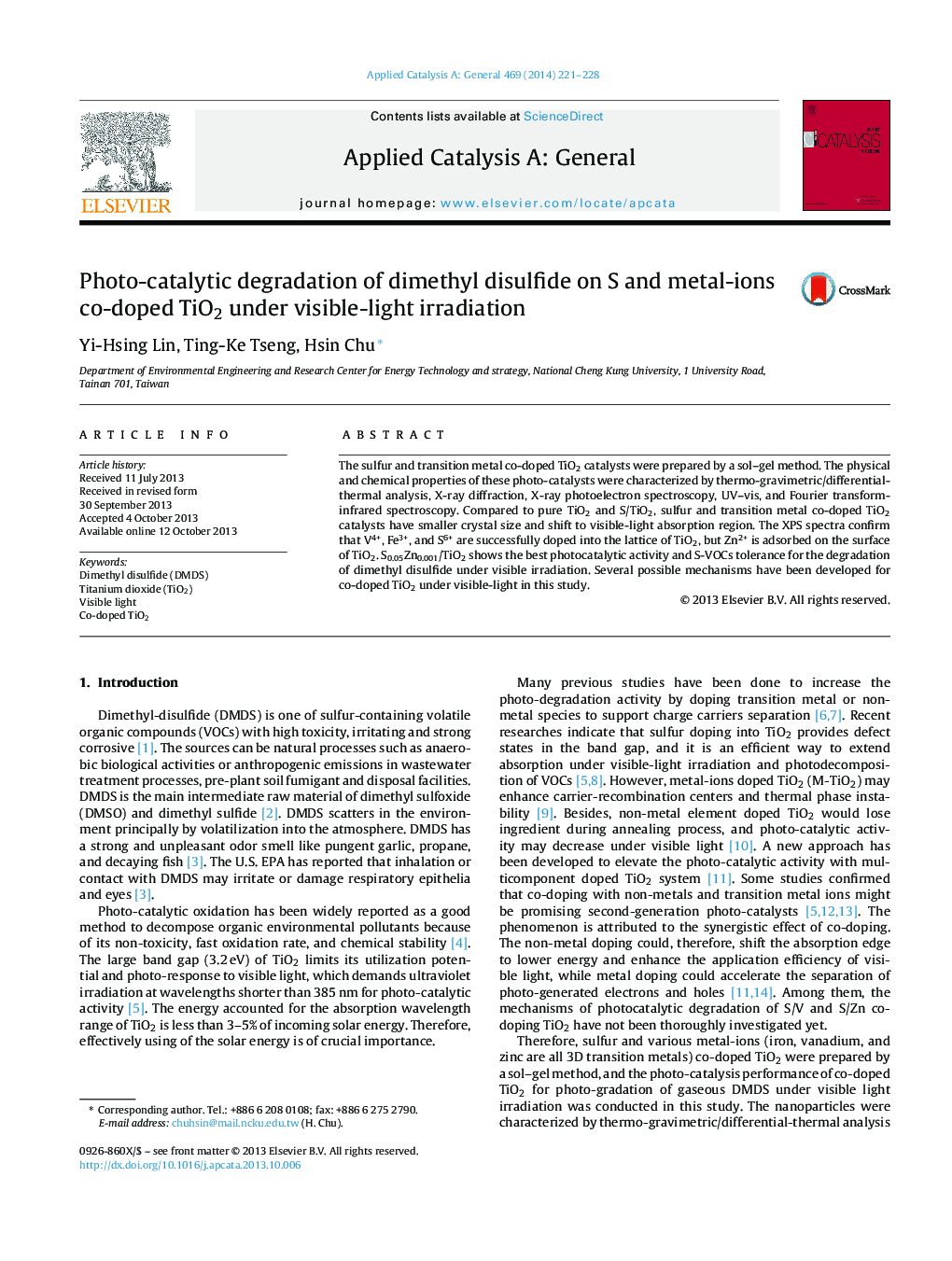| Article ID | Journal | Published Year | Pages | File Type |
|---|---|---|---|---|
| 40171 | Applied Catalysis A: General | 2014 | 8 Pages |
•V4+, Fe3+, and S6+ are successfully doped into the lattice of TiO2.•Dopants lead to the formation of impurity level in the semiconductor.•Zn2+ is adsorbed on the surface of TiO2 to form ZnO/TiO2 compound semiconductor.•Several possible mechanisms have been developed for co-doped TiO2 catalysts.
The sulfur and transition metal co-doped TiO2 catalysts were prepared by a sol–gel method. The physical and chemical properties of these photo-catalysts were characterized by thermo-gravimetric/differential-thermal analysis, X-ray diffraction, X-ray photoelectron spectroscopy, UV–vis, and Fourier transform-infrared spectroscopy. Compared to pure TiO2 and S/TiO2, sulfur and transition metal co-doped TiO2 catalysts have smaller crystal size and shift to visible-light absorption region. The XPS spectra confirm that V4+, Fe3+, and S6+ are successfully doped into the lattice of TiO2, but Zn2+ is adsorbed on the surface of TiO2. S0.05Zn0.001/TiO2 shows the best photocatalytic activity and S-VOCs tolerance for the degradation of dimethyl disulfide under visible irradiation. Several possible mechanisms have been developed for co-doped TiO2 under visible-light in this study.
Graphical abstractFigure optionsDownload full-size imageDownload high-quality image (117 K)Download as PowerPoint slide
